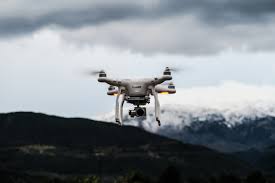Table of Contents
Inside Look
Now you have a drone. It is an amazing thing to be able to control something that can go so high up in the sky. Drones have taken crafts like videography and photography to another level. Shots that would have required the use of a helicopter and a camera only need a camera mounted on a drone. Sports like drone racing is another fun application of drone technology. The possibilities are almost limitless. However, it begs the question, how high can a drone fly? In this article, we will be taking a look at the capabilities and legal restrictions that concern the flight of your drone.
How High Can A Drone Fly?
Drone enthusiasts understand that drones can reach exceedingly high altitudes. However, most drones have a set of measures that prevent them from reach certain altitudes. However, a well-known photography drone brand has reported that their quadcopters can reach an altitude of about 1,500 feet! This begs the question, how high is too high?
How High Can You Fly Your Drone Legally?
The answer to this question depends largely on the rules and regulations in the place that you stay. For instance, in Europe, the maximum altitude that recreational drones can reach is 500 feet above the takeoff level. However, in the United States, drone flyers are subject to much tougher restrictions. The legal limit for altitudes drones can reach is 400 feet above the ground. Anything higher than that puts you on the wrong side of the law in the United States.
In addition to this, the Federal Aviation Administration only permits you to fly your drone as long as you maintain visual contact with it. If your drone flies out of your visual line of sight, you could get in trouble with the United States Government. On the flip side, you can apply for a special permit or waiver from the FAA to fly your drone out of sight.
Other Rules Regarding Drone Flight?
Don’t Fly Above People
According to US regulations, flights over people are illegal. The only exception is if the person is associated with your flight crew. This means that it may not be a great idea to fly over beaches, public and community events, or places where large groups of people may be gathered. In fact, there is an outright ban on the flight of drones over stadiums one hour before and after a sporting event. Also, anything closer than three miles to the stadium within this period is restricted airspace. This law is to make keep unsuspecting people safe and their privacy unbothered.
Don’t Fly After Dark – Civil Twilight
Civil Twilight is considered to be 30 minutes before sunrise and 30 minutes after official sunset. This simple rule stands even if your drone has night lights. If you find yourself flying your bird within this time frame, you are breaking the law.
Avoid Flying Over Wildfires and Disaster Sites
Flying over wildfires and disaster sites is a gross violation of the regulation set by the FAA. The Federal Aviation Authority prohibits the flight of unmanned aircraft over emergency rescue operations. Your drone will come in the way of the emergency workers doing their jobs.
Avoid Flying Over Sensitive Airspace
In America, there just some places you cannot fly your drone over. An example is the White House. In fact, you are not allowed to fly a drone in Washington DC, except you have a special permit. Nuclear plants, hydroelectric dams, military facilities, and airports are also among the blacklists. The authorities take these restrictions very seriously.
Conclusion – Why Are All These Rules Necessary?
These regulations may seem tough but there is a point to all of this. The authorities are not out to ruin your droning experience just because they can. On the other hand, these rules are put in place to ensure the safety, security, and privacy of people, properties, and sensitive government information is prioritized.
It is also important to note that the higher your drone flies, the higher the chances of the device getting blown of transmitter signal range by strong winds. This is why most drones are designed not to fly higher than a certain altitude.
Do not forget to keep all of these regulations in mind before taking your bird out for a spin.

